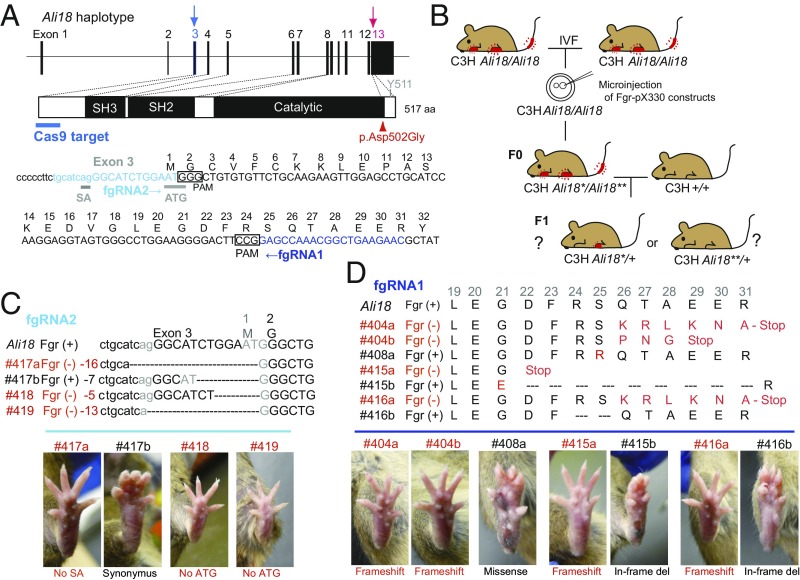Fig. 2.
Disruption of the Fgr gene by genome editing alters the autoinflammatory phenotype in Ali18 mice. (A) DNA sequence of guide RNA (fgRNA1 and fgRNA2) and PAM around exon 3 of Fgr are indicated. The p.Asp502Gly mutation in exon 13 is also shown. Sanger sequencing of a PCR fragment around exon 3 and genotyping of p.Asp502Gly were done using genomic DNA from F0 and F1 mice. (B) Schematic strategy of genome editing in the Fgr locus of Ali18 mice. pX330-based constructs were microinjected into Ali18/Ali18 oocytes in C3H (C3HeB/FeJ) genetic background from in vitro fertilization. The founder mice (F0) derived from microinjection were bred with wild-type C3H mice to obtain F1 mice. (C and D) Correlation of Fgr genotypes and lower limb morphology of F1 mice. Loss-of-function mutations show no morphological abnormality (red font). In contrast, missense, in-frame deletion, and synonymous mutations exhibit autoinflammatory paws. SA, splice acceptor; ATG, the translational initiation site. See also SI Appendix, Table S2 for detail.

